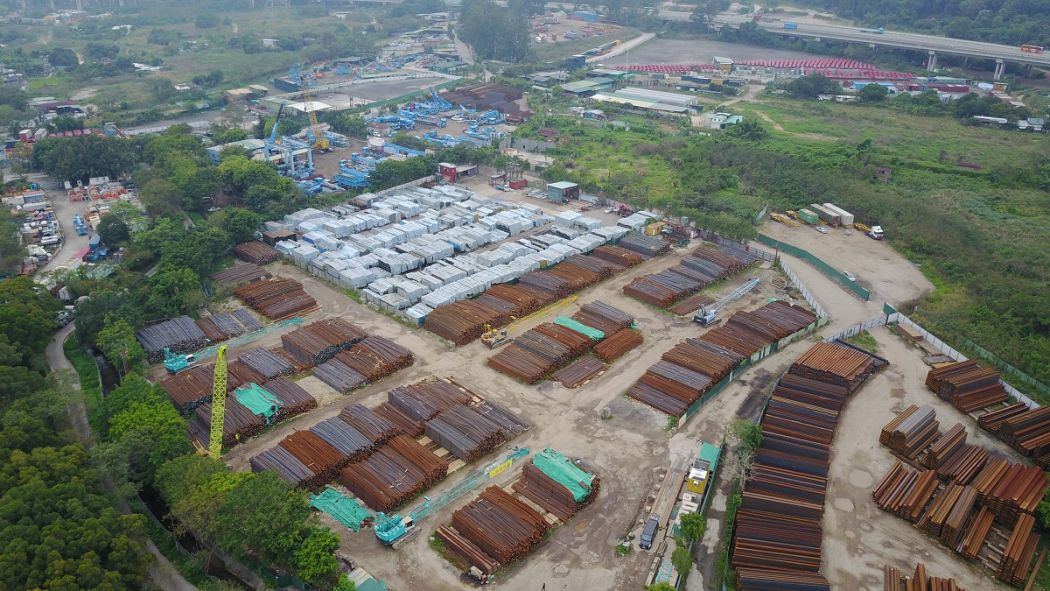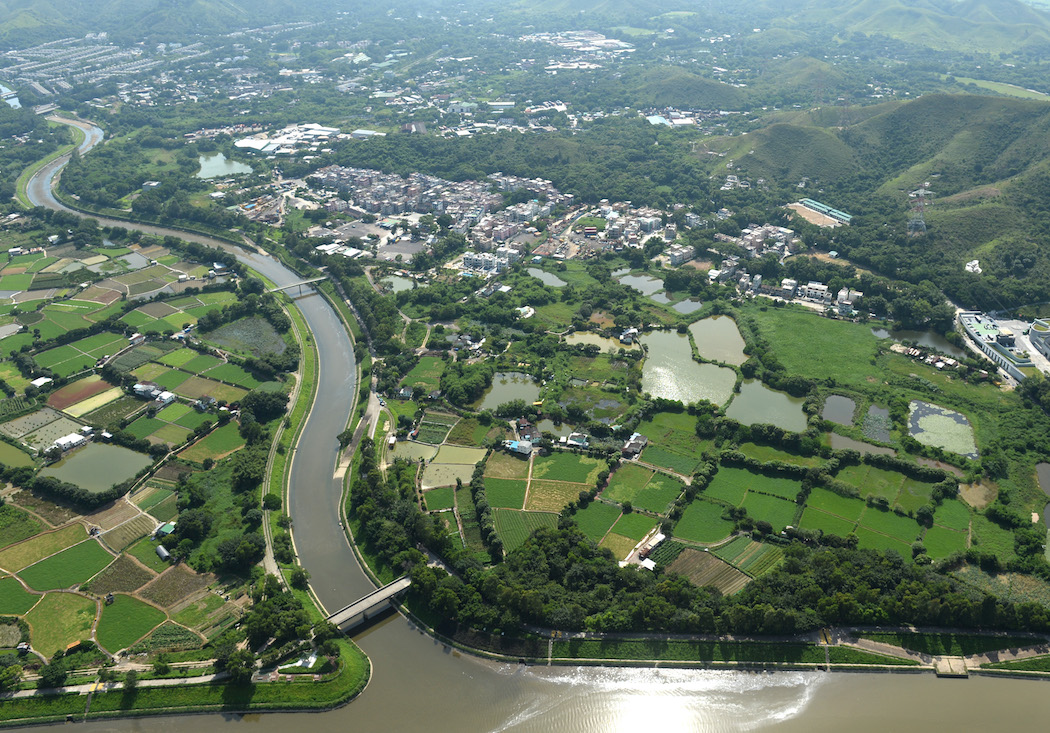
Two months ago, Augustine Ng Wah-keung wrote an article claiming to solve what many believe to be Hong Kong’s existential threat – the lack of land.
Ng’s article, titled “An Ultimate Solution for Land Supply in Hong Kong,” was unlike typical blog posts or newspaper op-eds: it was structured like a proposal, ran to 8,000 words, and often cited the finer points of land law.

Even more unusual was the identity of the author. Ng was a career civil servant who spent more than 30 years in the administration before retiring in 2011. He served as Assistant Director of Planning, the third-highest position at the Planning Department, and was a Government Town Planner at the Central Policy Unit.
However, anyone expecting Ng to go easy on his former bosses was in for a surprise. His article included a scathing critique of both land developers and the Hong Kong government, and in an interview with HKFP, Ng explained why he broke his years-long silence to emerge as one of the most outspoken critics of Chief Executive Carrie Lam’s signature land policy.
“Some people ask me – including my son – are you too bored? Why did you use so much time on that article?” he said.
“And I said no, you’re wrong. I’m not bored, but angry.”
Carrie Lam’s promised land
As part of her 2018 Policy Address, Lam announced this month a plan to build artificial islands totalling 1,700 hectares off the coast of Lantau Island. She said that, in 20 to 30 years’ time, “Lantau Tomorrow Vision” will provide up to 400,000 residential units that will accommodate up to 1.1 million people.

Public backlash was swift, with thousands taking to the streets in protest. Critics have said that large-scale land reclamation will be disastrous for the environment as well as costly – with some estimating a price tag of around HK$500 billion.
Ng had many reasons to vehemently oppose Lam’s plan, but his biggest objection was also the simplest: there was no need for reclamation at all.
“At the opening ceremony of the Hong Kong-Zhuhai-Macao bridge, Lam mentioned that she wanted to create a ‘double gateway’ to serve the [Greater Bay Area],” he said.
Ng was referring to Lam’s comments on Tuesday that the Lantau artificial islands, by virtue of their geographical location, will become “gateways” to the Guangdong-Hong Kong-Macao Greater Bay Area and the world.
“I think to get hold of some opportunities – like linking with the [Greater Bay Area] – I think it is quite legitimate. The question is, even if we want to create a double gateway, there is no need to reclaim,” Ng said.

“To say we must have an island at the geographical centre, I think this is very misleading… I don’t know whose idea this is, but if it is not [Lam’s] idea then she is really misled.”
Ng added that the plan, which had already proven to be divisive, would consume the community’s energy for years to come, and worse still, the reclamation process would be rigid and irreversible after pouring the first bucket of sand.
Ng’s preferred alternative is to develop obsolete agricultural land in the New Territories. The Hong Kong government does not release specific data on such sites, but Ng said a “reasonable guesstimate” of their total area was 8,000 to 10,000 hectares. Even if a large percentage of such land was ill-suited for housing, it would still yield more supply than Lam’s 1,700-hectare artificial islands.
“If you happen to take the West Rail when it comes out from Yuen Long, you can see almost endless flat agricultural land now being held up and abandoned.”
New Territories, old problems
The problem, Ng said, was that most New Territories farmlands were owned by a handful of developers in Hong Kong, who adopt an incremental model of development to push up prices.
“The developers hold up the land to serve as a land bank for their business, and… their stock prices would not allow them to release the land for development all at once,” he said.

In her Policy Address, Lam admitted there was a minimum of 1,000 hectares of privately owned farmland in the New Territories – a figure which Ng considered low, given that one of the developers alone owned 2,000 hectares.
Lam proposed developing the farmland under a so-called land sharing scheme, where owners could get permission to build residential blocks as long as a certain portion was reserved for public housing. Ng said Lam’s scheme was just a “camouflaged” version of the public-private partnership (PPP) model.
“To think that developers would cooperate with the government and release the land – that is very naive. That is because the objectives of the government and developers are totally different and, in a way, conflicting,” Ng added.
Since the government did not own the land, Ng said it became “passive and reactive” and was often at the mercy of developers’ whims. The government had no authority to compel developers to cooperate, and even if there was a joint scheme, the government could not set a deadline.
Hong Kong law does allow the government to forcibly take back land ownership for public purposes. As a former official who was involved with developing the “new towns” in the 1980s, Ng recalled that the colonial government frequently used the Lands Resumption Ordinance as a tool for development.

In recent years, however, the chief executive and her ministers have said that the Lands Resumption Ordinance was too risky to be used, since developers would likely challenge the decision in court and tie up the project in lengthy legal battles.
“Now we have a five-year-term government, and developers could use all sorts of tactics to delay the resumption,” Ng said.
While the law still operates in basically the same way, Ng acknowledged that developers have much more bargaining power now than before the 1997 Handover. When developers could stall indefinitely, the chief executive had no compelling reason to start a tug-of-war that might outlast her term.
Ng’s modest proposal
If negotiations proved ineffective and legal action was risky, what else could be done? Perhaps the key innovation in Ng’s article was his focus on changing incentives.
Ng said developers had learnt in the 1990s that land prices would only go up with time, especially when the supply grew ever more restricted. “They know that in 15 years’ time, they could still develop the land, and it will be even more expensive. That is the ‘hope value’ compared to the ‘present value,’” he said.
“If we can reverse this, i.e. the value in the future drops instead of increases, then nobody would hold the land, they will give [it back].”

While developers “own” farmland in the New Territories, by law they are only leasing it from the government – as is the case for almost all land in Hong Kong. Under the colonial-era system, land bought before the 1997 Handover would only have leases that go as far as June 30, 2047; this is usually treated as a technicality in day-to-day operation, and developers are regarded as the de facto “owners” of the land.
Ng’s deceptively simple solution was that, contrary to the public’s expectation, the government should announce that no leases would be renewed after 2047. When the leases expire, all land will be returned to the government and therefore be worthless to its current owners.
This was different from the Lands Resumption Ordinance because the government was technically not taking back land, just saying that it would not renew a lease once it had expired.
At the same time, the government would offer a buyback system, and those who returned the farmland soonest would be paid the most.
“The present value will be much greater, and the future value will drop rapidly. Then [developers] will have no incentive whatsoever to hold up the land, and they will surrender it back to the government,” Ng said.
Just to make sure his plan does not collapse Hong Kong’s housing market, Ng said the government would announce the measure was only targeted at New Territories agricultural land. Other leases would be renewed post-2047.

Ng said that, under his proposal, the government can regain the upper hand in development – a power that should be used to improve the supply and conditions of public housing. For example, the government could issue new leases that specify minimum flat sizes, thus eliminating the problem of “nano-flats.”
“If the government has the control of more land, then it can lead the market, both in terms of quantity and quality. It’s so simple.”
‘Destroy Hong Kong competition’
Ng said he wrote the article in two hours, and sent it on Whatsapp to a couple of dozen friends. In just a few days, the article made its way online and became a viral hit with thousands of likes and shares. For Ng, who was enjoying retirement and mostly offline, his internet fame was an unexpected turn.
“I took early retirement when I was 55, and I live in the mountains in the countryside. And since my retirement, I have not commented one single word on the planning and development of Hong Kong [until now],” he said.
The tipping point for Ng was the government-appointed Task Force on Land Supply. The task force launched a five-month public consultation in April, claiming that at least 1,200 hectares of land was needed for housing and commercial needs, and solicited feedback on 18 policy options.

Ng said he knows half of the members of the task force, many of whom are in his profession, but he found the options rigged and unattractive.
“If you look at the composition of the task force… I thought they should all pool their wisdom and get an effective and proper way to release the land. However, if you recall what they did – [they said] oh too problematic in the New Territories, I can’t deal with that,” he said.
Instead of giving an honest appraisal, they engaged in what Ng called a “Destroy Hong Kong competition,” choosing between wrecking the sea and wrecking country parks.
In light of Ng’s recent appearances in the media, some have questioned whether he had an ulterior agenda. In particular, his big-government stance led some to ask if he was trying to get back at developers for some prior feud.
Ng dismissed concerns about his motives, saying that he saw himself as a public intellectual: “I am very concerned about my independent professional background. If you noticed, up front in my article, I said I belong to no organisation and I represent no one.”

“I don’t want to associate myself with political blah blah blah… I don’t take sides,” he said.
Now that the article has been published, he said he had no plans to write a follow-up, and would never go back to the government – even if he was invited to implement his own “ultimate solution.”
Ng had made his argument and it was up to the community to react: “I gave the public what, in my view, is a practical alternative to a lot of bullshit.”
